Incognito Mode is a feature present in all major web browsers available today and can help you browse the web without leaving behind a record of your activities. However, if you share your computer with minors and want to keep track of what they are doing, you can disable the Incognito Mode permanently in your browser. Disabling is different from simply closing the Incognito Mode as it will permanently prevent anyone from opening an Incognito window in your web browser. Here is how you can do so.
In Chrome on Windows
- Open the Start menu, type
CMDand click on 'Run as administrator'.
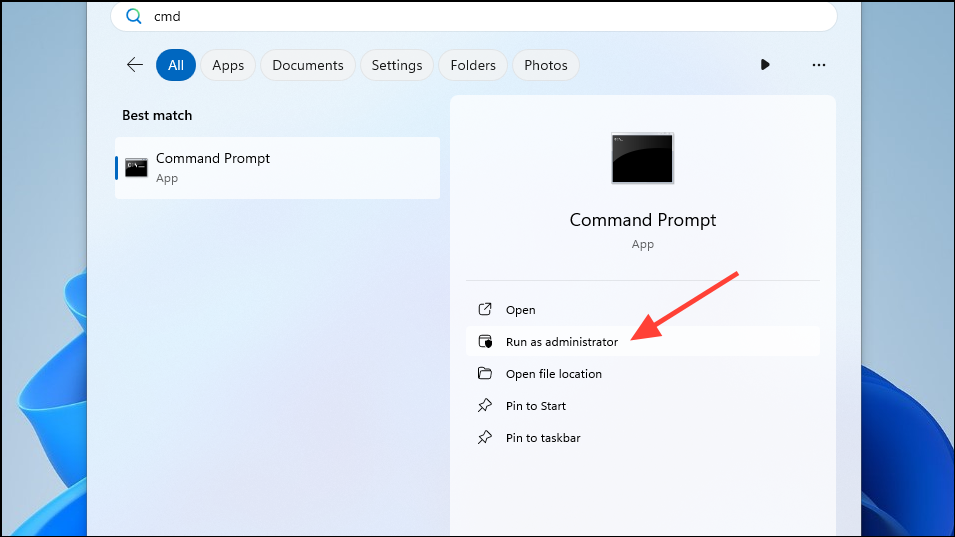
- When the command prompt window opens, paste the following command into it and press Enter:
REG ADD HKLM\SOFTWARE\Policies\Google\Chrome /v IncognitoModeAvailability /t REG_DWORD /d 1

- Now the Incognito Mode in Chrome should be grayed out and no longer usable. To re-enable the feature, paste the following command in the command prompt
REG ADD HKLM\SOFTWARE\Policies\Google\Chrome /v IncognitoModeAvailability /t REG_DWORD /d 0. Make sure to replace the1with0.

In Chrome on macOS
- To permanently disable Incognito Mode in Chrome on macOS, first use the
Command + Spaceshortcut to open Spotlight search. - In the search box, type
Terminaland select it when it appears in the search results. - Paste the following command in the Terminal window
defaults write com.google.chrome IncognitoModeAvailability -integrer 1zand press Enter. - Now close the Terminal and check Chrome. Incognito Mode should be disabled.
In Safari on macOS and iPhone
There is no direct option to disable the private browsing mode in Safari, but you can do so by adjusting content restrictions for different types of web content.
On iPhone
- Open device settings on your iPhone and tap on 'Screen Time'. If the option is disabled, tap on 'Turn on Screen Time' and then on the 'Continue' option to enable it.
- Now, tap on 'Use Screen Time Passcode' to set a passcode and then confirm it. This will prevent anyone else from making unauthorized changes.
- After setting up your passcode, go to 'Content and Privacy Restrictions'.
- Tap on the toggle for 'Content & Privacy Restrictions' at the top if it is not enabled. Then, go to 'Store, Web, Siri & Game Center Content'.
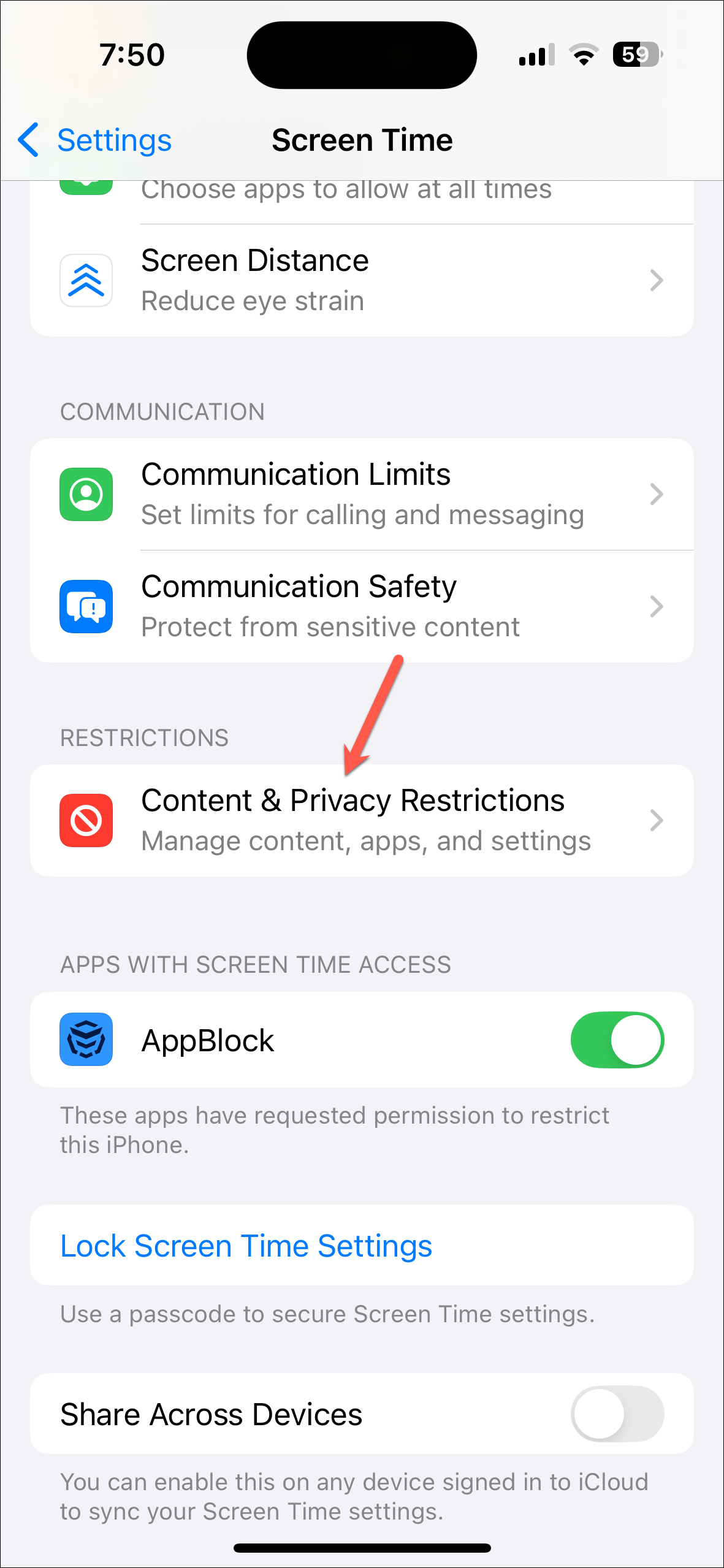
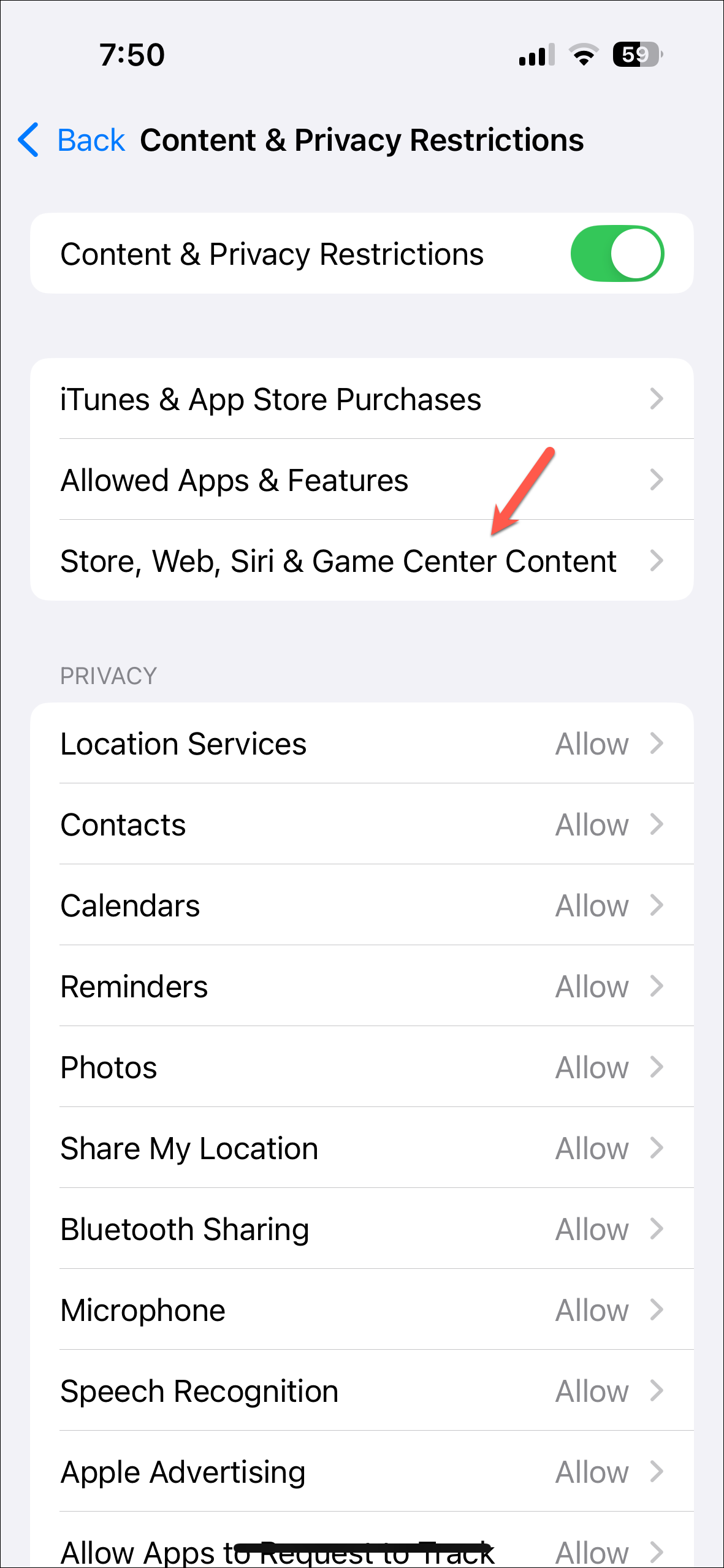
- Next, tap on the option for 'Web Content'.
- Select 'Limit Adult Websites' from the options to disable private browsing in Safari.

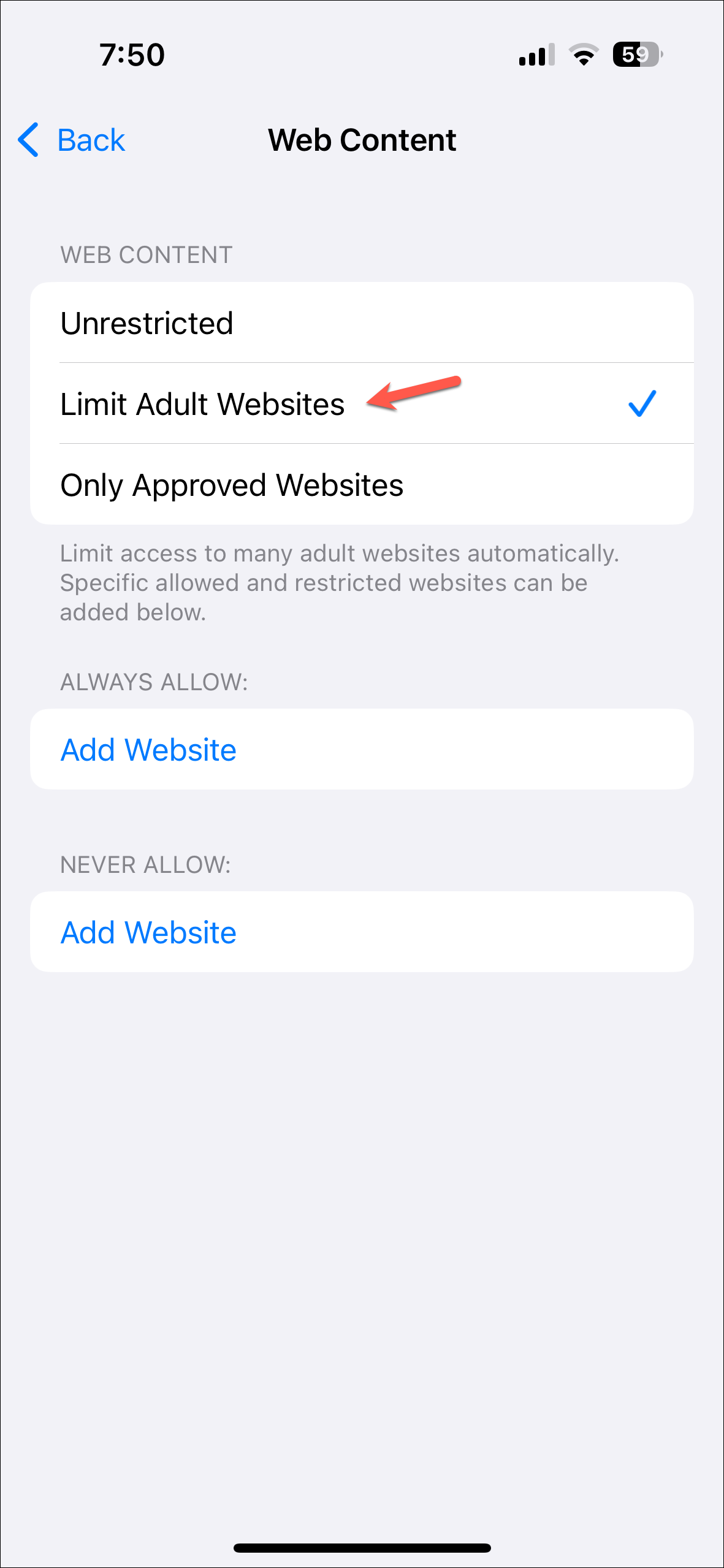
On macOS
- On macOS, open Settings and click on 'Screen Time' on the left.
- Then click on 'Content and Privacy' in the Restrictions section.

- Click on the toggle to turn on the option if it isn't on.
- Now, click on the 'Store, Web, Siri, & Game Center Content' option.

- For the 'Access to Web Content' option under Safari, select 'Limit Adult Websites' from the menu and tap on 'Done' in the bottom right.
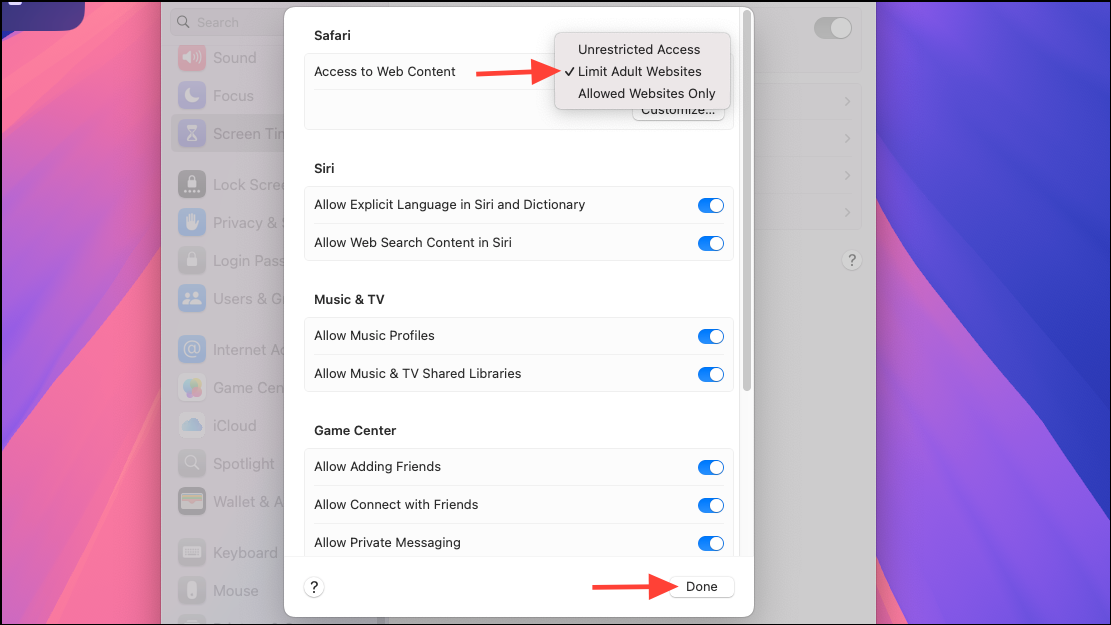
- Now, open Safari to check whether the 'New Private Window' option has been grayed out or not.
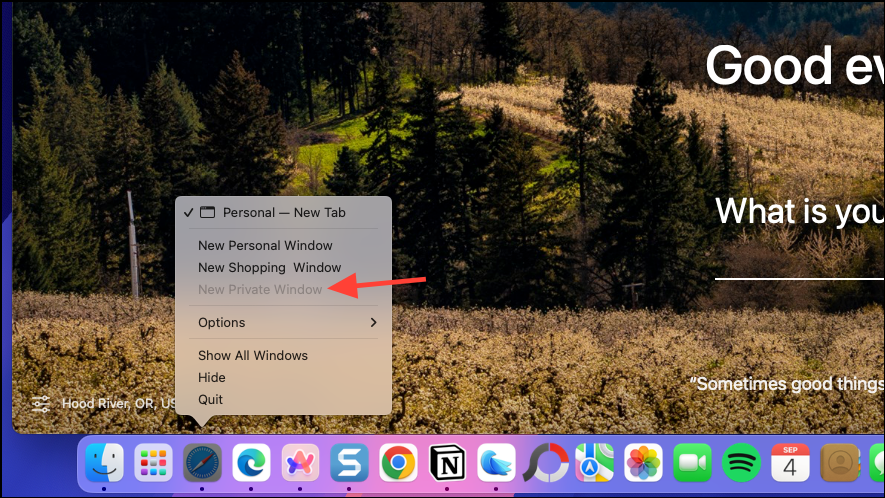
In Microsoft Edge on Windows
To disable Incognito Mode in Microsoft Edge on Windows, you will need to rely on the Registry Editor.
- Open the Start menu, type
regedit, and click on 'Run as administrator'.
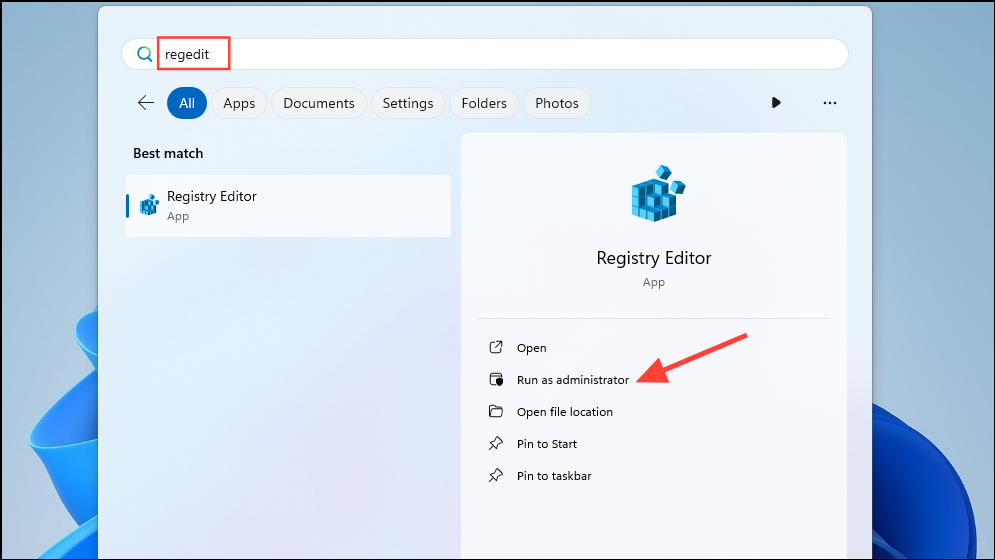
- When the Registry Editor opens, navigate to the following directory:
HKEY_CURRENT_USER > Software > Policies > Microsoft > Edge.

- With the Edge directory selected, right-click on the right side and select 'New' and then 'DWORD (32-Bit) Value.

- Name the newly created item
InPrivateModeAvailabilityand then double-click on it and set its value to1.

- Now, close the Registry Editor and reboot your computer. Open the Edge browser and the 'InPrivate Browsing' option should be grayed out now.
Things to know
- Making changes to the Windows registry can lead to various problems, especially if you do not have enough knowledge of how your PC works. So, make sure to create a backup before fiddling with it.
- While the above methods can help you disable Incognito Mode in Chrome, Safari, and Edge, they are not foolproof. So, keep a tab on the browsing history of whoever else is using your iPhone or computer.
- You cannot yet permanently disable Incognito Mode on Chrome and Edge on Android devices.
- Browsers like Firefox do not allow you to disable Incognito Mode, though there are extensions that claim to help you do so. However, there are security concerns with using such extensions so avoid using them if possible.


